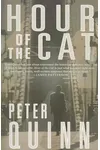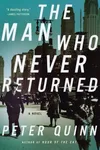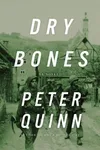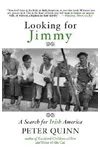Picture a New York storyteller who weaves Irish American history into gripping tales of struggle and mystery—meet Peter Quinn! A former speechwriter turned award-winning novelist, Quinn has carved a unique niche with his vivid chronicles of the Irish immigrant experience. His debut, Banished Children of Eve, snagged the 1995 American Book Award, and his Fintan Dunne series has captivated readers with its blend of historical depth and noir intrigue.
From the gritty streets of Civil War-era New York to the shadowy espionage of the Cold War, Quinn’s stories pulse with life, offering a window into the resilience and complexity of Irish Americans. Let’s dive into the journey of this literary maestro!
The Making of Peter Quinn
Born in 1947 in Greenport, New York, Peter Quinn grew up in the Bronx, steeped in an Irish Catholic world that shaped his storytelling. His great-grandparents, famine immigrants who arrived around 1847, inspired his deep dive into Irish American history. With a BA from Manhattan College and an MA in history from Fordham University, Quinn’s academic roots fueled his passion for historical fiction. Before penning novels, he honed his craft as a speechwriter for New York governors Hugh Carey and Mario Cuomo, and later as Time Warner’s corporate editorial director, bringing eloquence to the political stage.
Peter Quinn’s Unforgettable Stories
Quinn’s debut novel, Banished Children of Eve (1994), is a sprawling epic set during the 1863 New York Draft Riots. This 600-page masterpiece explores the Irish immigrant struggle amidst Civil War chaos, blending fictional characters with historical figures like Archbishop “Dagger” John Hughes. Its rich detail and unflinching look at ethnic tensions earned it the American Book Award.
The Fintan Dunne trilogy—Hour of the Cat (2005), The Man Who Never Returned (2010), and Dry Bones (2013)—showcases Quinn’s knack for historical mysteries. Featuring the cynical yet principled Irish American detective Fintan Dunne, the series spans from a Nazi-linked murder in 1938 New York to a Cold War conspiracy in 1950s Havana. Quinn’s noir style, inspired by Raymond Chandler, infuses these tales with gritty realism and moral complexity. His non-fiction work, Looking for Jimmy: In Search of Irish America (2007), offers a heartfelt exploration of Irish immigrant identity, blending personal anecdotes with historical insight.
Quinn’s writing is marked by meticulous research and a Catholic sensibility, with themes of redemption and human flawedness drawn from prayers like the Salve Regina and Dante’s Divine Comedy. His ability to “take history by the throat and make it confess,” as novelist William Kennedy put it, makes his work both thrilling and profound.
Why Peter Quinn Matters
Peter Quinn’s work has left an indelible mark on historical fiction and Irish American culture. By giving voice to the famine Irish and their descendants, he’s illuminated a pivotal yet often overlooked chapter of American history. His consultancy on films like Martin Scorsese’s Gangs of New York and PBS documentaries such as The Irish in America has amplified his influence, making him a key figure in preserving Irish heritage. Quinn’s stories resonate with readers who crave authentic, human-centered narratives that bridge past and present.
- Born: 1947 in Greenport, New York
- Key Works: Banished Children of Eve, Fintan Dunne trilogy, Looking for Jimmy
- Awards: 1995 American Book Award, 1987 New York Emmy for McSorley’s New York
- Fun Fact: He advised on Martin Scorsese’s Gangs of New York!
About Peter Quinn
Ready to step into Quinn’s vivid world? Snag Banished Children of Eve or dive into the Fintan Dunne trilogy for a thrilling blend of history and mystery!




